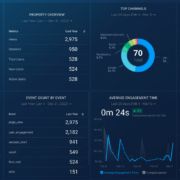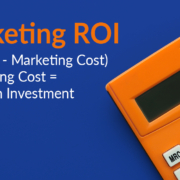SEO vs SEM: What’s the Difference, and Which One is Right for You?
There sure are a lot of acronyms in digital marketing, huh? SEO, SEM, CTR, PPC, CPA, CPC, OPP – okay so that last one is actually from ‘90s hip hop, but still, you get the picture.
It can be confusing. Especially because some are so similar. Take SEO and SEM. SEO you might have somewhat of a handle on – after all, it’s a pretty big deal nobody, especially us, can stop talking about – but SEM?
It’s a lot to take in – and sometimes when tech writers in the industry try to explain these terms, it seems like their target audience is made up of aliens. All you want to know – in the simplest terms possible – is the difference between SEO vs SEM.
Well, we got good news for you – that’s exactly what you’re about to get.
What’s the Difference Between SEO and SEM?
SEO means search engine optimization.
SEM means search engine marketing.
SEM covers all digital marketing strategies where you direct traffic to your site using search engines. SEO is a marketing strategy where you optimize your webpages to rank high on search engine result pages (SERPs).
This means that SEO is SEM but SEM is not necessarily SEO. Wait – is that too confusing?
Here’s the big key difference: SEM includes using SEO along with pay-per-click ads in its marketing strategy.
Okay, now that we got those basic details settled, let’s do a deep dive into what each one looks like, so you can figure out which marketing strategy your business should use.
Search Engine Optimization
SEO is focused on organic traffic – meaning traffic you don’t pay for. The higher you place on the SERPs, the higher click-through-rate (CTR) you get. In fact, the top placing organic result receives 10x more clicks than websites that take 10th place.
Placing on the first page of the SERPs drastically increases your website’s CTR (click through rate), and so SEO strategies aim to make your website algorithm friendly so you can get there. There’s three main kinds of strategies associated with SEO – on-page SEO, off-page SEO, and technical SEO.
SEO Strategies
All SEO campaigns aim to place you at the top of the organic search results on Yahoo, Bing, and of course, Google. There’s a few different tactics involved in placing high on the SERPs. To please the AI lords of the Google search algorithm, you need to make sure you’re checking boxes from each kind of SEO strategy.
Off-Page SEO Strategies
This type of SEO involves all the optimization that occurs off of your website. The most common kind of off-page SEO is link building to increase your website’s authority and direct more traffic to your site from external sources.
Another common element is using social media marketing effectively to promote your site and business, as well partnering with an influencer to spread brand awareness and get organic traffic from their audience.
On-Page SEO Strategies
To earn a high placement on the SERPs using on-page SEO strategies, the primary method is keyword research. Google search puts a high emphasis on relevance. You want to determine what words searchers will be using in their search queries that are relevant to your business.
Those specific keywords need to be included on your site – not in a garbled, word stuffing way, but in a way that shows the algorithm you have the info your customers need to give them a quality user experience (spoiler alert: Google cares about that as a ranking factor).
This often means employing content marketing strategies where you regularly produce relevant, quality content – say, on a blog – with clear meta descriptions and high quality images, and place it on your website. This will increase your keyword ranking and placement on the SERPs.
Technical SEO
You want to make sure that the structure of your site is algorithm friendly. Technical SEO works hand-in-hand with on-page SEO by making sure your website and content has clear title tags and subheadings that the search engine AI can easily crawl through, and that your site speed is up to snuff.
SEO Pros and Cons
There’s a whole lot of positives packed into SEO. For one – it’s a long term marketing strategy. Once your website is optimized, it’s optimized. Granted, you’ll have to keep refreshing the content every now and then to keep competitors from stealing your placement on the SERPs.
But overall, SEO is (as our SEO expert Dan Reash is always saying) like building yourself a house. Every now and then you might have to check the pipes or do some maintenance, but the structure and benefits are there long term.
It’s also inexpensive. You don’t need to pay for any ad space, and the traffic it brings in is essentially unlimited.
However, it does take a little bit of time for the results of your SEO efforts to show.
Search Engine Marketing
SEM, as we mentioned, contains SEO as a part of its digital marketing strategy. But it also uses pay-per-click (PPC) ads such as Google Ads to place on the top of the SERPs as a sponsored entry.
PPC ads are a little more complicated than just purchasing ad space in a local newspaper, so let’s take a look at how they function before diving into the benefits and drawbacks of SEM.
How SEM Paid Ads Work
For Google Ads and search ads, you bid on an amount of money you’ll pay each time your ad gets clicked on. There’s three different options here that are even more acronyms to stuff into your brain: CPC, CPM, and CPE.
CPC is cost-per-click which means exactly that – how much you’re willing to pay for a single click on your site.
CPM, or cost-per-mile means you’re paying for impressions, or in simpler, non-digital terms, the amount of people your paid ad is shown to. (Essentially, imagine having to pay for every car that drove past your billboard.)
CPE is cost-per-engagement, meaning you pay when the user takes a specific action on your site that you define. Clicks count as engagements – as well as entering contact info on a landing page of an ad campaign.
How much you’re willing to pay decides how high your search ad is going to place, but this SEM strategy also requires keyword research and quality ad copy for its placement as well. Ad campaign search strategies are similar to organic SEO strategies in that they’re both assigned a quality score by the algorithm.
SEM Benefits
SEM campaigns are great if you want to see quick growth in return for your marketing efforts. PPC campaigns get instant results. But these results are short-term and much more expensive than working on your organic ranking.
While SEO alone takes a long time to show results and push your ranking placement up the SERPs, it does eventually yield a higher CTR rate, as a vast majority of consumers don’t trust paid ads.
What’s the Best Path – SEO or SEM?
SEO is great if you have a limited advertising budget, and a lot of patience. If you’ve got some web development and content creation chops, then you can increase website traffic on your own relatively easy with SEO strategies.
However, if you want instant results to give you an initial boost, then including PPC as a part of your marketing campaign can get the wind beneath your sails while you wait for your organic traffic to increase. Keep in mind as well that managing a PPC campaign can be time consuming, so you don’t want to spread yourself too thin trying to manage SEO and PPC marketing efforts. To truly get the most out of SEM, you’ll likely need a team.
Digital Marketing is Dangerous – Don’t go it Alone
Okay – so maybe it’s not dangerous – but it can be difficult running a digital marketing strategy by your lonesome. Especially when you’ve got your hands full already running a business.
You don’t have to face the big, bad virtual world alone. SEO, SEM, PPC – we’ve got expert knowledge on all the acronyms you need for your digital marketing efforts to succeed. We can build backlinks, monitor your website’s performance metrics, and help you become a lord of the algorithm. There’s no need for your small business to have a small web presence – contact us today.












